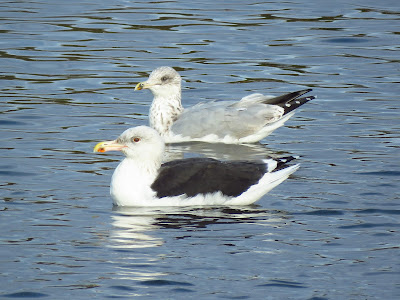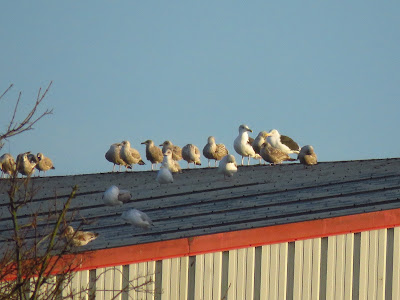The largest gull, adult has blackish back and massive bill, and an overall bulky look. Legs are pink, unless Lesser Black-backed Gull's, which are yellow. Juveniles are best identified by size and bill size when mixed with other gulls. Heavy flight when compared to other gulls. Great Black-backed Gulls are scavengers and kleptoparasites, snatching food from other marine birds. Feed on birds, fish, shellfish and carrion and discarded food in rubbish tips. Breeds on rocky cliffs and islands on West and North UK coasts.
Status and distribution in Hull
A scarce wintering gull in Hull, although possibly under recorded. It is a wary bird and tends to rest out of the way, mixed with other gulls on roosts on industrial areas near the river Hull and the estuary. Nowadays usually in single figures, contrasting with Richard Broughton's report of the species being common and abundant around the docks and Humber front in the 80s, for example 'Hard weather in December 1985, meanwhile, brought 1,200 into St Andrew's Dock'.
Conservation and management
The species has suffered moderate declines in breeding and wintering populations, and it is Amber listed in the UK.
More information
Broughton, R.K. 2002. Birds of the Hull Area. Kingston Press. Hull, UK.Top shot. 6 October 2020. Great Black-backed Gull on the old town by Scale Lane Br.









No comments:
Post a Comment